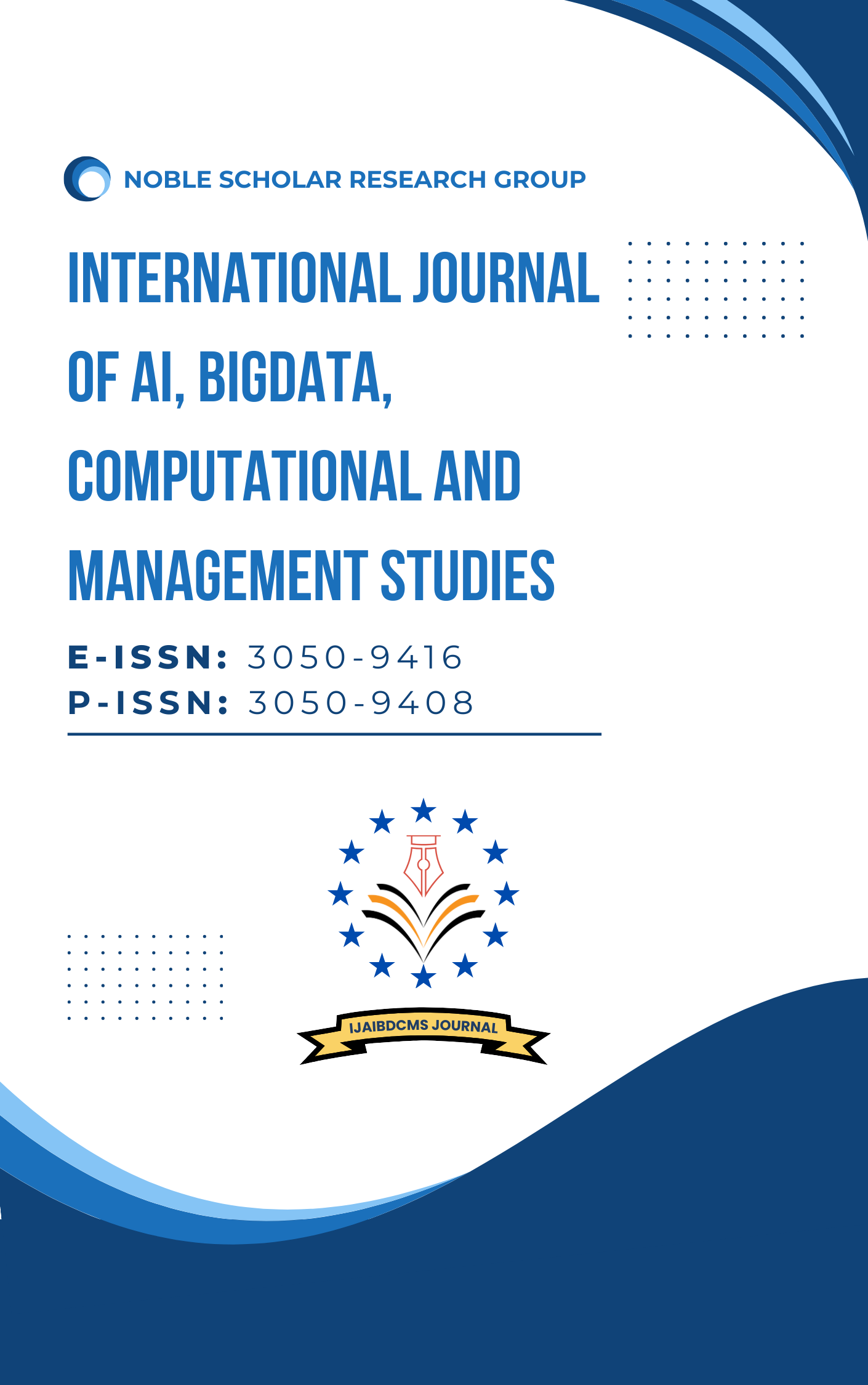Going Serverless: A New Paradigm in Healthcare Technology
DOI:
https://doi.org/10.63282/3050-9416.IJAIBDCMS-V5I3P106Keywords:
Serverless computing, healthcare technology, cloud computing, scalability, patient care, application deployment, healthcare transformation, regulatory compliance, digital health, IT infrastructure, cost efficiency, development speed, telehealth services, patient data management, compliance and security, vendor lock-in, performance and latency, security risks, AI and machine learning, interoperability, patient-centric careAbstract
In recent years, the healthcare industry has witnessed a transformative shift towards serverless architecture, redefining how medical organizations manage their technological resources. By eliminating the need for traditional server management, serverless computing enables healthcare providers to focus on delivering high-quality patient care while enhancing operational efficiency. This paradigm shift allows for seamless scalability, ensuring that applications can adapt to fluctuating patient demands without the burden of over-provisioning resources. Moreover, serverless technology fosters innovation by allowing developers to build and deploy applications quickly, leading to faster turnaround times for critical health solutions. Security and compliance are paramount in healthcare, and serverless architectures inherently offer robust mechanisms to protect sensitive patient data, ensuring that organizations meet regulatory requirements with greater ease. As healthcare organizations embrace cloud-native solutions, they can leverage advanced analytics and artificial intelligence to glean insights from vast datasets, driving personalized care and improving patient outcomes. This shift streamlines operations and facilitates collaboration among various stakeholders, from providers to patients, creating a more integrated healthcare ecosystem. The serverless model encourages experimentation, allowing healthcare innovators to test new ideas without fearing extensive resource allocation. As we look ahead, it becomes increasingly clear that going serverless is not merely a technological upgrade but a fundamental rethinking of how healthcare technology can evolve to meet the needs of a rapidly changing landscape. Embracing this paradigm positions healthcare organizations for success in a digital-first world and enhances their ability to deliver exceptional care, ultimately benefiting patients and providers alike
References
1. Kumari, A., & Sahoo, B. (2022). Serverless architecture for healthcare management systems. In Handbook of research on mathematical modeling for smart healthcare systems (pp. 203-227). IGI Global.
2. Sadek, J., Craig, D., & Trenell, M. (2022). Design and implementation of medical searching system based on microservices and serverless architectures. Procedia Computer Science, 196, 615-622.
3. Vilaplana, J., Solsona, F., Abella, F., Filgueira, R., & Rius, J. (2013). The cloud paradigm applied to e-Health. BMC medical informatics and decision making, 13, 1-10.
4. Kothapalli, M. (2019). Cloud Computing and Serverless Architecture Utilization. European Journal of Advances in Engineering and Technology, 6(2), 88-92.
5. Lakhan, A., Dootio, M. A., Sodhro, A. H., Pirbhulal, S., Grønli, T. M., Khokhar, M. S., & Wang, L. (2021). Cost-efficient service selection and execution and blockchain-enabled serverless network for internet of medical things.
6. Chinamanagonda, S. (2022). Serverless Data Processing: Use Cases and Best Practice-Increasing use of serverless for data processing tasks. Innovative Computer Sciences Journal, 8(1).
7. Nastic, S., Rausch, T., Scekic, O., Dustdar, S., Gusev, M., Koteska, B., ... & Prodan, R. (2017). A serverless real-time data analytics platform for edge computing. IEEE Internet Computing, 21(4), 64-71.
8. Shafiei, H., Khonsari, A., & Mousavi, P. (2022). Serverless computing: a survey of opportunities, challenges, and applications. ACM Computing Surveys, 54(11s), 1-32.
9. Pérez, A., Moltó, G., Caballer, M., & Calatrava, A. (2019, April). A programming model and middleware for high throughput serverless computing applications. In Proceedings of the 34th ACM/SIGAPP symposium on applied computing (pp. 106-113).
10. Shahrad, M., Fonseca, R., Goiri, I., Chaudhry, G., Batum, P., Cooke, J., ... & Bianchini, R. (2020). Serverless in the wild: Characterizing and optimizing the serverless workload at a large cloud provider. In 2020 USENIX annual technical conference (USENIX ATC 20) (pp. 205-218).
11. Samea, F., Azam, F., Rashid, M., Anwar, M. W., Haider Butt, W., & Muzaffar, A. W. (2020). A model-driven framework for data-driven applications in serverless cloud computing. Plos one, 15(8), e0237317.
12. Santu, A. (2020). Development, Test and Application of a framework for cloud serverless services (Doctoral dissertation, Politecnico di Torino).
13. Crespo-Cepeda, R., Agapito, G., Vazquez-Poletti, J. L., & Cannataro, M. (2019, September). Challenges and opportunities of amazon serverless lambda services in bioinformatics. In Proceedings of the 10th ACM International Conference on Bioinformatics, Computational Biology and Health Informatics (pp. 663-668).
14. Kritikos, K., & Skrzypek, P. (2018, December). A review of serverless frameworks. In 2018 IEEE/ACM International Conference on Utility and Cloud Computing Companion (UCC Companion) (pp. 161-168). IEEE.
15. Heiskari, J. J. (2022). Computing paradigms for research: cloud vs. edge



